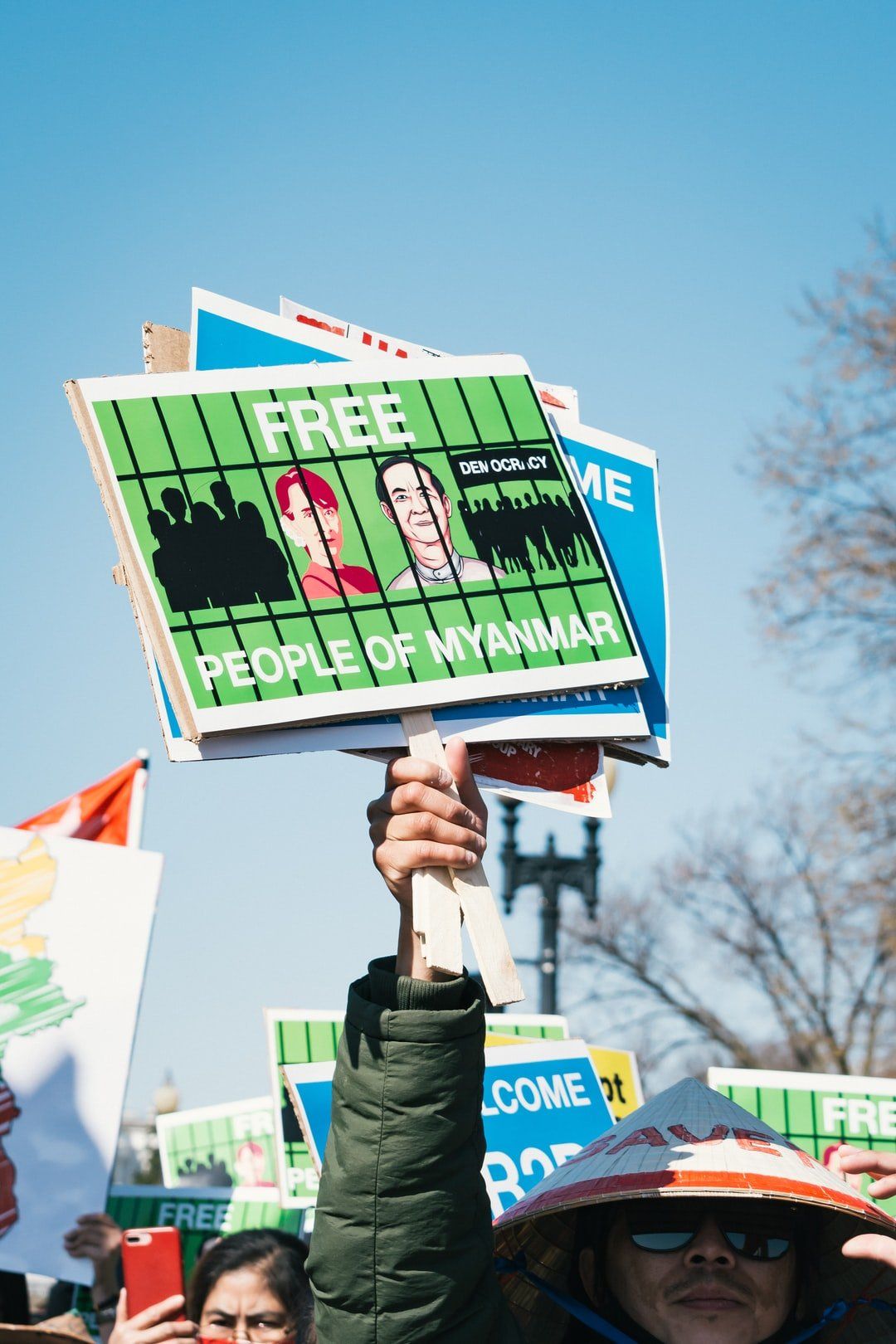MISINFORMATION
How To Stop The Climate Fake?
Misinformation on social media is a hurdle that threatens global efforts to address the climate crisis. What can be done about it?
By Javier Canales Luna
January 9, 2021
Dar riu
2020 will not be well remembered in Oregon. The nightmare, started with the covid-19 pandemic and followed by a summer of mass protests claiming justice for the killing of George Floyd, reached its climax in September. The Pacific State was blanketed with the smoke of destructive wildfires, resulting in the death of at least 11 people and countless land and housing damage. Experts were firm: the unprecedented fires across the West Coast were a consequence of climate change. However, some people believed a different story that went viral on social media, that pointed to “Antifa”, a term to refer to anti-fascist activists, as the authors of the wildfires. Despite the efforts of police departments to counter the unsubstantiated information, by the time Facebook took action to remove it from the platform, the rumours had been shared by thousands of users. In the meantime, the false news led to threats to journalists, vigilante violence and numerous people ignoring evacuation orders.
The events of Oregon sums up the problem social media is encountering to deal with misinformation. Not long ago, social networks appeared in our lives as neutral, safe platforms, where users were free to say anything. However, as Google, Facebook, Twitter and so have turned into big giants, with billions of daily users and humongous profits, their influence in the public opinion has become overwhelming. Public and official concern is scaling, as dangerous or misleading information has recursively spread on sensitive issues such as democratic processes, vaccinations, or the coronavirus pandemic, aiding the rise of populism and the increasing polarisation of political and media debate.
The climate fake
A topic that has been particularly polluted with fake news is climate change. Climate change misinformation refers to the types of behaviours and information which question or try to discredit mainstream climate science knowledge and well-supported research about climate change (Treen et al., 2020). A broader yet contested definition would also include climate alarmism, that is, exaggerated claims about climate change that are not supported by science.
The main strategy of climate deniers is to pollute the public debate on climate change with doubt, to create what has been called the “paralyzing fog of doubt around climate change” (Begley, 2017). Climate sceptics tend to focus on three key issues: the reality of climate change, the urgency to take action, and the credentials of climate scientists. (Treen et al., 2020).
Tracing the life-cycle of climate denial campaigns on social media is a hard task. Multiple groups seem to be involved in the funding, creation and spreading of climate misinformation, including governments, contrarian scientists, political and religious organizations and carbon major industries such as coal, steel or car manufacturers, the media, particularly those outlets with right-wing affiliates, and the public (Björnberg, 2017). Once the content is out, actors with high visibility and influence, like media outlets, politicians or prominent bloggers, help spread and amplify the information to a wider public.
How climate change misinformation spreads on social networks
Here is where algorithm engineering enters the scene. Today’s social networks are constantly developing and fine-tuning their algorithms to “improve” the user experience. While the functioning of algorithms differs from one network to another, it is possible to highlight some basic features. First, recommendation engines based on artificial intelligence usually suggest users new connections based on common networks and common interests. This idea is grounded on homophily, the deep-rooted human tendency to make bonds with those who are similar to themselves (Aiello et al., 2012). The artificially promoted communities result in “echo chambers”, where information and beliefs are shared and amplified inside a closed network. Certain contents within echo chambers are then algorithmically ranked based on the user's previously viewed material rather than trustworthiness, which leads to “algorithm bias” (Sîrbu, 2019).
The algorithm ecosystem has proved particularly fertile ground for misinformation to spread. Scholars have found that false news travels faster, farther and deeper in Twitter than true news (Vosoughi et al., 2018). To add complexity, humans are not the sole responsible for the dissemination of false information. Increasingly sophisticated bots have been used to amplify online propaganda and misinformation campaigns. For example, A 2020 study cited in an article from The Guardian, a media outlet, suggests that bots are behind the unproportionate spread of climate denialist messages on Twitter.
Risks, regulation and the environmental ethics
It is difficult to assess the extent to which exposure to fake news affects people's opinions. But social concern is rising, as more and more people believe that social media has a negative effect. With increasing public and official pressure to moderate content, it seems that social media is entering a new era in its short history. However, regulating platforms that have come to support free expression worldwide poses highly complex and sensitive dilemmas. Major concerns stand on who, governments or tech giants, should set the rules and boundaries of online debate, what kind and to what extent (mis)information should be controlled, and what technical measures should be taken.
Take, for example, Facebook’s strategy to address climate misinformation. Amid growing critics, legal challenges and advertising boycotts, Facebook is tightening its self-governance policies (in a new attempt to keep the shadow of regulation away). The company has recently created a Climate Science Information Center to connect people to climate information from official sources and established a number of fact-checking programs with third parties. Posts with debunked claims have less visibility in the platform and are labelled on top so people can understand they have been rated false. Controversy, under Facebook’s guidelines, climate content can be classified as an opinion and thus exempted from fact-checking intervention, which has been seen by some commentators as a loophole for climate misinformation. Asked about this issue, Andy Stone, Facebook’s policy communications director, argued that the company flagging and banning decisions are mostly directed to content that could lead to imminent harm to human health and safety.
Mr. Stone’s reply -the same words were used to justify the removal of false claims related to the wildfires in Oregon- points to one of the key challenges in the fight against climate change: the urgent need to take decisive action. In 2018, the United Nation Intergovernmental Panel on Climate Change published a special report saying that the next ten years will be crucial to limit a climate change catastrophe. Even so, and despite the growing scientific consensus on the anthropogenic cause of climate change, governments, major polluters and other key actors remain resistant to tackle the crisis seriously. This arguably includes social networks. Social media is a powerful tool to disseminate information, shape public discourse and increase environmental awareness. On the contrary, the spread of climate misinformation on social media contributes to public confusion and political inaction, refusal or limited support for climate policies, and further polarisation on the political debate around climate change (Lewandowsky, 2017).
Misleading climate information on social media might push climate inaction to the point of disaster. Against this existential crisis, social media have the moral responsibility to firmly address climate misinformation, either by themselves or, preferably, in the context of a legal framework and close collaboration with governments. Even if the causal link between climate misinformation and human health or environmental damage is not always crystal clear, internationally agreed environmental principles such as the Precautionary Principle, should provide solid ground for action. This principle states that where stakes are high that particular processes generate a risk of serious or irreversible harm, the lack of scientific certainty should not be used as an excuse for not taking preventive action. The principle has been adopted in a number of international treaties and national legislations, and it is primarily directed to policy-makers. However, why should not social networks embrace it?
Any proposal to regulate social media leads inevitably to the question on who should be the custodian of freedom of speech. While governments should be at the forefront of this process, the policy-making process is often tedious and cumbersome. Also, it is not clear whether legal regulation is a well-suited instrument to keep pace with technology and innovation. But the absence of legal guidance should not refrain social networks from taking action against climate misinformation. A storm is coming, and media and environmental ethics is probably the best compass social networks will have to navigate amid the waves.
Read More


Watch Our Episodes




